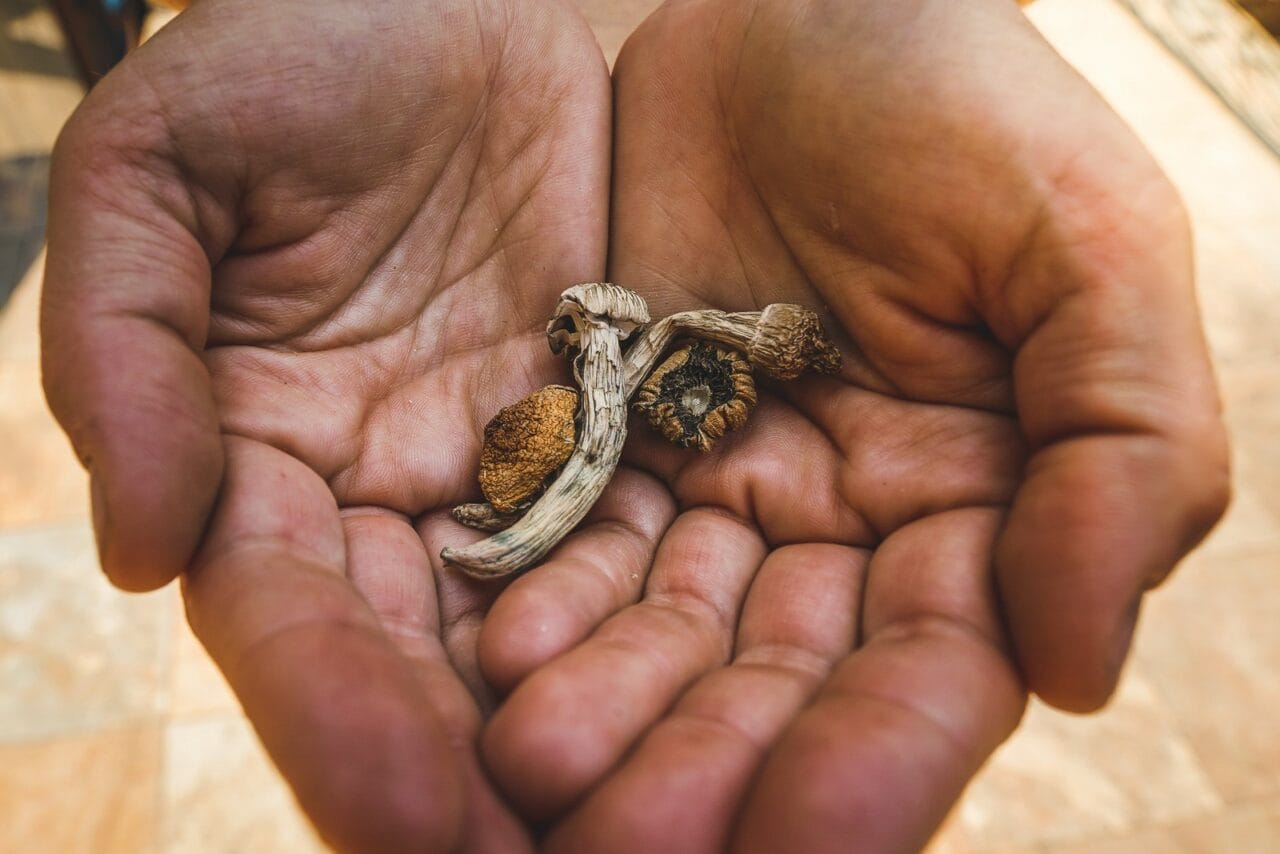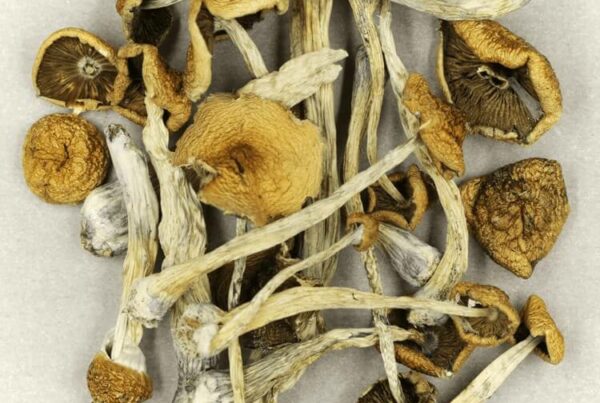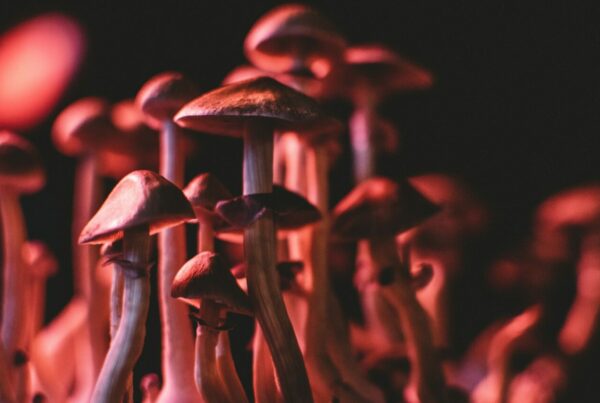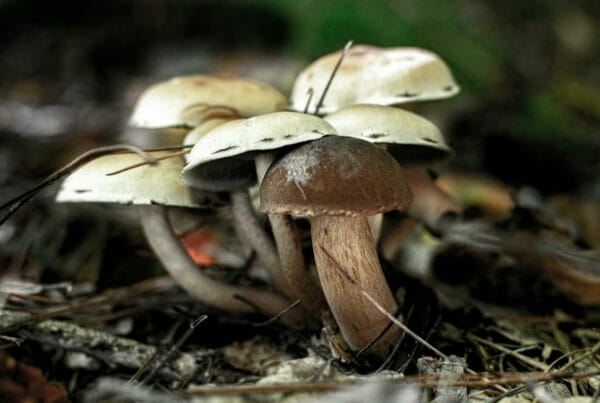Ever considered trying dried shrooms? They are among the highly sought-after psychedelics nowadays. Although you might be interested, you may also be uncertain if they’re the right fit for you.
If you’re unsure which psychedelic to start with, you’re not alone. We’re here to elucidate the differences between dried mushrooms and other substances, and why they can be an excellent choice for your initial psychedelic experience.
[toc]Main Points:
- The active ingredient in Psilocybe mushrooms is widely studied for mental health applications due to its safety, low abuse potential, and brief duration of effects.
- Dehydrated Psilocybe is common and helps maintain potency while extending shelf life.
- Psilocybin activates the serotonin 5-HT2A receptor, leading to enhanced perception, vivid imagery, complex hallucinations, and time distortions.
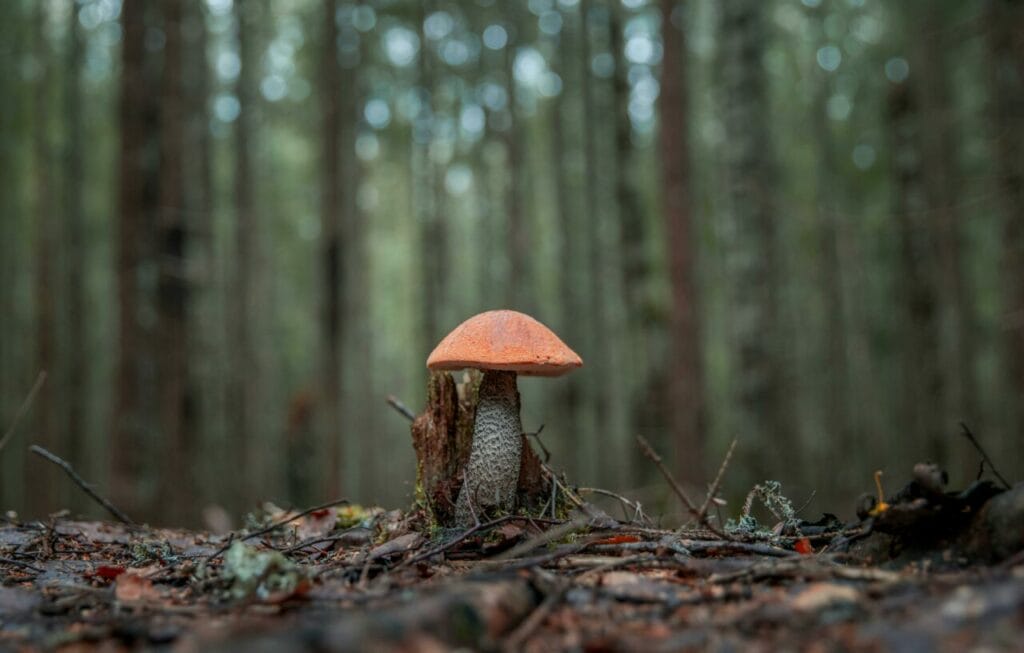
Psilocybin Mushrooms: An Exploration of the Psychedelic Mycology
Psilocybin mushrooms contain the mind-altering compounds, psilocybin and psilocin, which are responsible for the hallucinogenic effects experienced by users. The most recognized species, Psilocybe cubensis, is characterized by a light brown cap, dark spots, and a distinct shape. Numerous other species within the Psilocybe genus also produce these compounds.
Some toxic mushrooms closely resemble Psilocybe in appearance, and contain harmful toxins. For this reason, we strongly discourage mushroom picking.
In the past, many mushrooms played a crucial role in Central American spiritual practices. Today, their potential for treating mental health disorders, including substance abuse, is being explored by researchers.
Drying and Storing: The Dehydration Process
The dried version is the most accessible form of Psilocybe. Dehydration is key to preserving potency and extending shelf life. Fresh mushrooms are usually dried using a food dehydrator or left on a wire rack in a cool, dry area.
It’s critical to remove excess moisture to prevent the growth of
Active compounds in Magic mushrooms can degrade and mould can start to grow due to moisture. However, if properly dried, these mushrooms can be stored for future use.
Follow this guide to properly dry and store your magic mushrooms:
- Dry the mushrooms thoroughly using a suitable food dehydrator or a wire rack.
- Preserve them in airtight containers to keep their potency intact and prevent moisture damage.
- Store them in a dry, cool place to maintain their psychoactive properties.
- Avoid exposing them to direct sunlight to prevent degradation.
- Monitor regularly for mould or dark spots which indicate spoilage.
How Psilocybe Cubensis Compares to Other Psychedelics
Besides dried mushroom products, there are other psychedelic substances available online, which can have different effects on the body and are consumed in various ways. Some of these substances are categorized as classic hallucinogens, similar to psilocybin.
| Substance | Origin | Physical Effects | Potential Therapeutic Uses | Duration |
| Psilocybin | Found naturally in over 200 types of mushrooms | Enhanced perception, hallucinations, altered sense of time | Depression, Anxiety, PTSD, OCD, Cluster headaches, Alzheimer’s disease | 4-6 hours |
| DMT | Naturally occurring in plants such as Psychotria viridis | Deep spiritual experiences, visions, auditory hallucinations | Depression, Addiction | 15-30 minutes |
| LSD | Synthetically produced, first made by Albert Hofmann in 1938 | Heightened emotions, altered perception, auditory and visual hallucinations | Depression, Anxiety, Addiction, Cluster headaches, Alzheimer’s disease, Tourette’s syndrome, ADHD | 8-12 hours |
| MDMA | Synthetic, first synthesized by Anton Köllisch in 1912 | Increase in serotonin, dopamine, norepinephrine, and possibly oxytocin release | PTSD, Autism spectrum disorder, Obesity, Narcolepsy, ADHD | 3-6 hours |
| Ketamine | Synthetic, first synthesized by Calvin L. Stevens in 1962 | Anesthetic, can produce psychedelic effects at high subanesthetic doses | Depression, Bipolar disorder, Anxiety, Suicidal ideation, Addiction, Autism spectrum disorder, Chronic pain, Arthritis, Fibromyalgia | 1-3 hours |
How Does Your Body React? Understanding the Process
The operational mechanisms of each substance are largely theoretical, derived from the observed outcomes. These speculations offer an understanding of potential ways the substances might induce their effects, but they don’t offer a concrete grasp of the underlying processes at play.
- Psilocybin: Effortlessly stimulates the serotonin 5-HT2A receptor, resulting in enhanced perception, vibrant imagery, complex hallucinations, and distortions of time. It also instigates modifications in thalamic gating and amplifies activity in the prefrontal cortex.
- DMT: Its engagement with serotonin receptors is only a fraction of its total effect, the full scope of which is still not entirely understood. Although the serotonin receptor is vital, it does not completely account for all the phenomena associated with DMT.
- LSD: It functions within the serotonergic system in the Dorsal Raphe, attaching to the 5-HT2A receptor as a partial agonist and the 5-HT1A receptor as a full agonist.
- MDMA: Provokes an immediate feeling of pleasure by stimulating the release of dopamine and serotonin.
- Ketamine: Its exact mode of action remains a mystery. Its antidepressant effect could be attributed to the blockage of NMDA receptors on neurons, though selective inhibition of NMDA receptors on GABAergic interneurons and the dampening of AMPA receptors might also contribute.
What Impact Do Psychedelic Mushrooms Have?
The mental and physical effects can vary significantly based on factors such as dosage, environment, and the user’s psychological state. Common experiences associated with the consumption of psychedelic mushrooms include:
- Visual and Auditory Hallucinations: Users may experience non-existing patterns, colors, and shapes.
- Distorted Sense of Time: Time may seem to either stretch or shrink.
- Altered Perception: Sensory experiences may be heightened or distorted.
- Emotional Fluctuations: A wide range of emotions, from happiness to distress.
- Spiritual Revelations: Experiences of a spiritual or mystical nature.
- Physical Effects: These can include increased heart rate and blood pressure, or sensations of nausea
When used responsibly, this substance is considered safe. However, without proper preparation, some users may have unpleasant experiences. Experienced users may benefit from higher doses, but beginners who consume large amounts may experience a “bad trip.”
Controlling your experience with this substance is straightforward. Choose a peaceful, quiet environment and have a sober “trip guide” to assist you.
A Preferred Choice Over Other Substances
Medical experts often prefer dried shrooms due to their long shelf life and easy dosage. Their shorter duration and more manageable intensity make them a suitable option for those new to psychedelic therapy. They are also more natural compared to other synthetic hallucinogens, with the exception of DMT.
Distinguishing the benefits of different compounds can be challenging, as many clinical trials produce similar results, particularly between LSD and psilocybin. The latter is the most extensively researched psychedelic for mental health issues, largely because of its proven safety record, low abuse potential, and short perceptual trips.
Health Benefits
- This natural compound could help ease “cognitive rigidity,” reduce self-defeating thoughts, and promote self-compassion.
- A 2022 study revealed that a single 25 mg dose lowered depression scores in people with treatment-resistant depression. A 2023 study found significant and enduring reductions in depressive symptoms with the combined use of regulated substances and psychotherapy.
- A 2022 clinical trial found that psilocybin-assisted psychotherapy significantly decreased the number of heavy drinking days over eight months compared to a placebo.
- A 2017 study published in the American Journal of Drug and Alcohol Abuse indicated that two to three doses, combined with cognitive behavioural therapy (CBT), enabled 10 out of 15 participants to quit smoking for a year.
- In a 2022 pilot study published in Biological Psychiatry, four out of five patients with anorexia reported an improvement in their eating disorder symptoms after a single dose of shroom with psychotherapy. Two of these patients also reported reduced anxiety.
- Preparation Phase: This initial stage includes one or multiple sessions, each lasting between 1 and 6 hours, with a facilitator. The purpose of these sessions is to address any questions or worries you might have, set your objectives, and define clear expectations. They are meant to build trust and create a safe environment.
- Dosing Phase: This stage spans between 5 and 8 hours. During this period, you will be in a reclined position, donning an eye mask, and listening to a pre-selected playlist. A therapist will accompany you throughout the entire experience.
- Integration Phase: This last stage includes post-session discussions that aim to help you make sense of your experience. These sessions are spread across a few meetings, with each one lasting for several hours.
Is buying shroom products a more economical option compared to other substances?
When compared to LSD products, dried mushrooms are significantly more affordable. For example, you can buy 3.5 grams for around $20. In contrast, the cost of LSD in gel tabs varies depending on the dosage. For instance, six tabs with a strength of 100 micrograms each might cost approximately $90.

